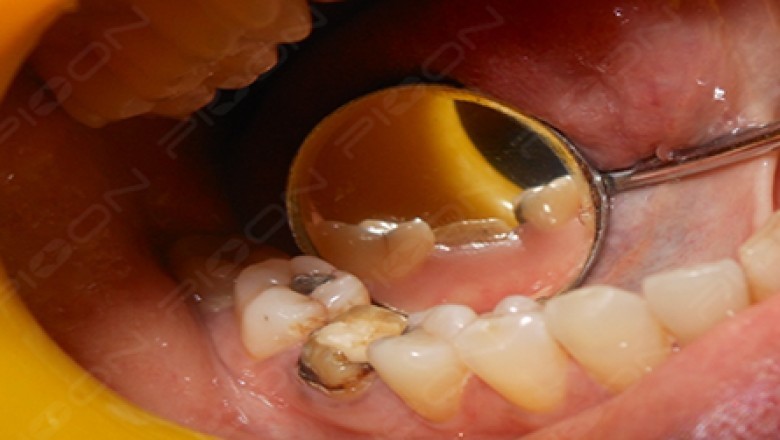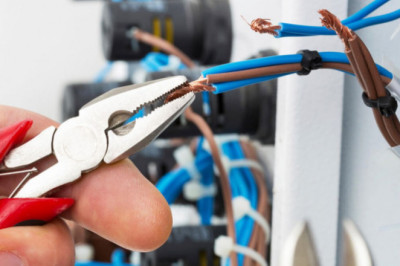views

Crown Lengthening Procedure using Dental Diode Laser
Introduction- Crown lengthening is a surgical procedure designed to increase the extent of supra-gingival tooth structure for esthetic and restorative purposes. Based on the clinical scenario, crown lengthening procedure is categorized as either esthetic or functional. Esthetic crown lengthening is usually done in the anterior esthetic zone of oral cavity, where the major concern is to reduce excessive gingival display and increase the clinical crown height. While functional crown lengthening is done to expose the crown structure so that a functional prosthesis can be placed over the exposed crown. Preservation of biologic width is the therapeutic endpoint of both these procedures. Crown lengthening can be limited to soft tissue only, or both soft and hard tissue can be contoured.
Indications- There are several indications including: restorative needs, to increase clinical crown height lost due to caries, fracture or wear, to access sub-gingival caries, to access a perforation in the coronal third of the root, to relocate margins of restorations that are impinging on biological width, esthetics, short teeth, uneven gingival contour and gummy smile.
Treatment Modality- Crown lengthening procedure can accomplished either by the use of a periodontal knife/scalpel, rotary coarse diamond bur, electrosurgery etc. These techniques have certain disadvantages like surgical trauma, postoperative pain and swelling, bleeding during surgery, poor patient acceptance and also coronal migration of the soft tissue margins is seen during healing which makes it difficult for recording the finish lines after the tooth preparation.
With recent advancements, conventional techniques are replaced by LASERS which offers a relatively bloodless surgical procedure, sterilization of the wound site, minimal swelling, reduction of surgical time, high patient acceptance, reduced postoperative pain and much lesser need of post-operative medications.
PIOON Laser offers different wavelengths like 450nm/810nm or 980nm. Out of which 450nm can used in non-contact or contact mode whereas 810nm and 980nm are used in contact mode in order to perform a crown lengthening procedure. The most desirable among them is 450nm wavelength due to faster cutting and lesser thermal damage due to non-contact mode of operation.
In the present case, clinical and radiographic evaluation revealed adequate keratinized gingiva, presence of sub-gingival caries and inadequate tooth structure on the lingual side of lower left first molar. Firstly assessment of biologic width was done by probing to the bone level (referred to as "bone sounding") and subtracting the sulcus depth from the resulting measurement. If this distance is <2 mm a diagnosis of biologic width violation can be confirmed. In this case, as there was sufficient sulcus depth of 4mm, a laser gingivectomy (crown lengthening procedure) was performed in order to lengthen the tooth without encroaching the biologic width using 450nm wavelength with 400 micron tip in non-contact mode taking all the safety precautions.
Arora S et al in 2016 used 980nm wavelength for crown lengthening and suggested that diode laser is very safe and useful for esthetic periodontal soft-tissue management because it precisely ablates soft tissues using various tips, and the wound healing is more favourable, which leads to minimal thermal alteration of the treated surface. Lagdive S et al in 2010 used semiconductor diode laser for surgical crown lengthening and suggested that the diode laser technique is easier, is well accepted by patients, and provides predictable postoperative results.
Conclusion- Taking into consideration the excellent clinical outcome, the dental diode lasers can be considered as a better and acceptable alternative for conventional crown lengthening.
References- Arora S et al. Clinical Crown Lengthening Using Soft Tissue Diode Laser: A Case Series. Int. Journal of Oral Health and Medical Research 2016;81-3 and Lagdive S et al. Surgical Lengthening of the Clinical Tooth Crown by Using Semiconductor Diode Laser: A Case Series. The Journal of Oral Laser Applications 2010;53-7.

Preoperative view (Pic Courtesy – Dr. Sana Farista)

Postoperative view (Pic Courtesy – Dr. Sana Farista)












